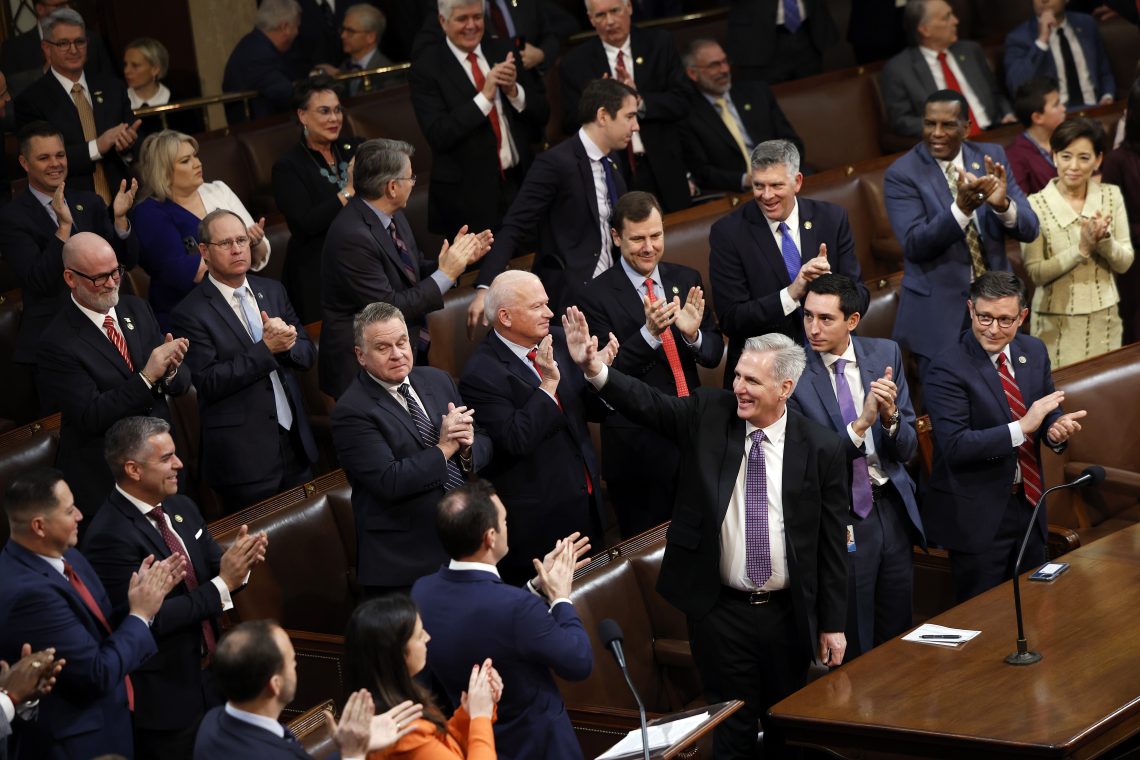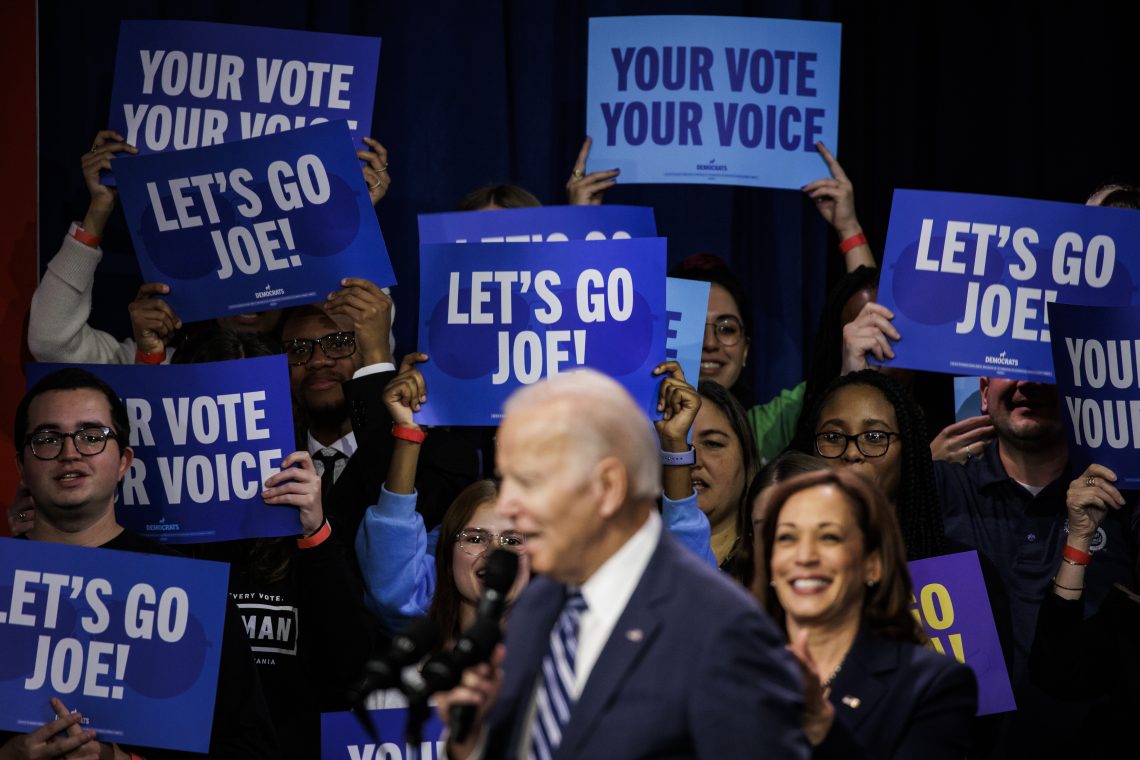U.S. congressional infighting is more than meets the eye
Rather than a sign of disfunction or decline, intra-Republican clashes in Washington mark a new dynamism within American politics.

In a nutshell
- Republican rancor in Congress is a return to normal
- Legislative rule changes will bring more deliberation
- The GOP will likely sharpen their contrast with liberals
Observers of American politics are contemplating the significance of Republican infighting over electing the Speaker of the House and its showdown with the Senate and White House over the national debt ceiling. Many have concluded that these squabbles are a sign of increasing dysfunction in Washington, reflecting growing and perhaps unmanageable civil discord in the United States. This interpretation is largely superficial and wrong. These incidents, in fact, reflect a new dynamism in U.S. politics, one that heralds a shifting center of gravity and breaking of Washington’s partisan gridlock.
Fight for the House
Unlike leadership contests in many parliamentary democracies, the U.S. Congress does not form coalition governments comprised of multiple parties. Members of the Senate and House of Representatives identify either as Republicans or Democrats, with a handful of independents who usually choose to caucus with one of the parties. The majority party holds the leadership position, and typically the elected head of that party is axiomatically voted to govern the body as a whole. But in a rare contest, when Republicans assumed the House majority after national elections in November 2022, California Congressman Kevin McCarthy won a hard-fought vote to secure the Speaker of the House.
Since the Republican majority in the House was so narrow, Mr. McCarthy had to secure near-unanimous support from party members. A group of 20 Republicans actively withheld their support, resulting in several rounds of voting for the speakership. This was resolved only after intense negotiations on rule changes, key committee assignments and priorities for Congressional oversight and policymaking.
The media portrayed the contest as an internecine struggle between the GOP’s moderate leadership and a radical, far-right wing. In reality, the 20 dissenting members are no cohesive bloc, differing on many issues. They united principally to force rule changes in the House. Their effort also had the sympathy of many other members, including lawmakers who consistently voted for Mr. McCarthy.
Political stability will come not from a resurgence of bipartisanship, but from a dominance of conservative or liberal views among Americans.
In the end, the vote was mainly not about a challenge to Speaker McCarthy’s leadership or a changing conservative majority. It turned on reversing a trend over a decade in the making, under both Republicans and Democrats, to centralize legislative power in the Congressional leadership – one that increasingly saw regular order bypassed and priorities, rules and oversight decisions negotiated by those at the top.
The ensuing compromise will deliver a more deliberative process in Congress. As a result, we are likely to see more legislation and more debates that show the sharpening differences between the two parties’ agendas.
Even before the House leadership vote, there was every expectation for gridlock and a lack of bipartisanship in the runup to the next national elections in 2024. Both parties have become less politically diverse, with Republicans dominated by a clear conservative majority and Democrats overwhelmingly liberal and decidedly left-of-center. A return to a more regular legislative order will clarify the diverging agendas of the two parties and their likely policy prescriptions if they control the presidency and the Congress in 2025.
Debt ceiling debate
By law, Congress must pass, and the president must approve, legislation to raise the borrowing capacity of the U.S. government. If they fail to do so, the result is often framed as a “government shutdown,” although the government does not actually shut down and the U.S. continues to meet its financial obligations. It is also argued that shutdowns shake public confidence in the full faith and credit of the government.
Past episodes have adversely affected the U.S. at least in the short term, so the threat to withhold Congressional approval is often used as pressure for concessions from the White House or opposing parties. In practice, the consequences are often more political than fiscal, with each side calculating whom voters would blame for any shutdown and the dislocation that follows.
This time, the debt limit is shaping up differently. Speaker McCarthy has already declared that the limit will be raised. While President Joe Biden has promised not to negotiate over it, many believe he will be incentivized to do so if he can take the issue off the table for the rest of his term.

Republicans are framing the debate as an effort to restore fiscal responsibility and want measures to curb long-term spending, including reductions in nondefense discretionary spending and the national debt. In contrast, Democrats cast the GOP as seeking to cut or curtail services and benefits, including the Social Security and Medicare benefit programs. Republicans have insisted that they are not seeking changes to Medicare, the national healthcare program for seniors.
There have been the usual attempts to frame policy differences as a partisan chasm, demonizing opponents as radical, unreasonable and dangerous. The ferocity of these narratives, often played out in the media, obscures the efforts by both sides to advance contrasting policy agendas. Fundamentally, the contest is not much different from the struggles between the center-right and center-left parties of Europe.
Scenarios
Congress will likely weather the debt limit debate just as it did the fight over the House speakership. The legislature is not dysfunctional; in fact, these confrontations reflect a return to past decades’ politics as usual.
That said, there will naturally be the typical gridlock of divided government ahead of national elections. One key bellwether is the progress of the annual National Defense Authorization Act, which has been successfully passed every year for decades. There are good chances that this year, the House and Senate leadership may fail to strike a bipartisan consensus on the bill.
The divide in Congress, however, is unlikely to significantly disrupt foreign policy or fiscal matters. In addition, some areas of bipartisanship will likely continue. One example is the continued focus and scrutiny over China, which will probably lead to a Congressional vote this year banning the Chinese-owned TikTok social media platform.
The showdown in Congress reflects real divisions in American politics. The electorate is about evenly divided, and the next few cycles of national elections will presumably end the trend of leaning either center-right or center-left. Political stability in the U.S. will come not from a resurgence of bipartisanship, but from the dominance of conservative or liberal views among Americans.
Despite what their most strident critics predict, Republicans are not about to undermine governance or sow civil discord. The most probable scenario is that Republicans will continue to sharpen the contrast between conservative and liberal policies over the next two years, foreshadowing their favored policies if a conservative Republican is elected president in 2024. The Republican platform will inevitably be pro-life and pro-traditional family, and favor parental control over education, stricter election procedures, tighter immigration enforcement and fiscal restraint. In a less likely scenario, differences among Republicans will shatter party cohesion and its conservative drift, potentially undermining the party as a national force going into presidential elections.








